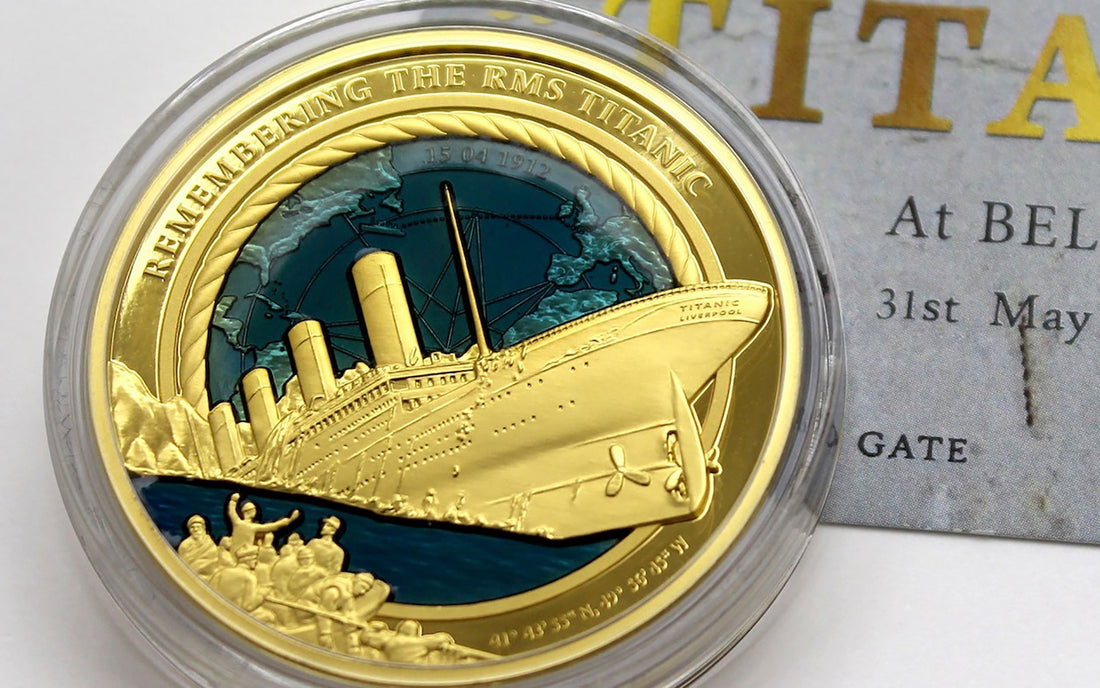Are you interested in building a bullion collection or making a bullion investment? Can you do both at the same time?
Between these options, bullion can take several forms and serve several different purposes. Let’s explain.
When we talk about any type of bullion, we’re really talking about two things. One is investment bullion (or an investment that generates wealth for a stockholder in much the same way another stock or bond would, though with significant perks depending on economic trends). The other is collectible bullion, which is valuable to enthusiasts intrigued by the history, rarity, and demand of various coins and other collectible items made of gold, silver, platinum or palladium.
Of course, collectible bullion is also an ‘investment,’ so to speak — sometimes of considerable time, energy and money, depending on the collector — but the worth of the collectible isn’t based only on the pure value of the precious metal from which it’s made. Instead, its value is based on a combination of that intrinsic value and other concrete and intangible associations with the product. Investment bullion has ‘intrinsic value’ alone, whereas collectible bullion will often have ‘numismatic’ value too.
To be clear: people who are interested in purchasing and selling investment grade gold bullion, for example, do things differently, and have distinctly different objectives, than those who wish to collect gold bullion as part of a hobby.
Since it’s pretty easy for beginners in this field to get these activities confused, this article briefly overviews the differences between investing in precious metals and acquiring (and often trading and showcasing!) metals as objects of historical and aesthetic appeal in ways distinctly appealing to collectors.
In the process, we’ll run through different forms and purposes of both kinds of bullion with the hope that we’ll identify the most appealing approach for you — whichever way you choose, getting involved can be tremendously exciting.
Physical Investment Bullion: Purpose and Forms
As we mentioned above, all bullion carries intrinsic value — it is intrinsically valuable for being composed of a certain weight and purity of a precious metal. Canada’s minimum standard purity level for gold bullion is 99.5%, and Canada’s standard for silver bullion is 99.9%. A purchase of genuine bullion is tax-exempt (you don’t have to pay HST or GST — and if you’re looking for more granular information on the legal and tax-related implications of this purchase, read our blog post on discussing taxes on bullion investments).
The sale price of bullion is driven by the prevailing market prices for that precious metal and by the way a specific gold or silver bullion dealer establishes its premiums. These prices should be transparent and accessible. Bullion is a financial investment, first and foremost, though it may have some other appealing features shared with collectible bullion.

Why Purchase Investment Bullion?
There are several compelling reasons to acquire investment bullion, which we’ve summarized below. Doing so is a reliable way to:
- Hedge against inflation. Gold and silver have demonstrated throughout the past hundred years that they preserve their purchasing power or even appreciate in value when inflation rises; thus, investment bullion protects your purchasing power through periods of high inflation.
- Diversify your portfolio. Related to the concept of hedging against inflation, investing in bullion is part of a sensible plan to spread your investments around in multiple asset classes (ever hear the phrase, ‘don’t put all your eggs in one basket?’) in case one takes a plunge or another skyrockets.
- Earn capital gains over time. Some people buy and sell bullion to make capital gains: they buy when prices are low and sell when they’re high. If bullion is held for decades or passed on to future generations, it has the capacity to generate tremendous value over the long term.
- Protect yourself against fiat currency depreciation and economic instability. Local currencies are never entirely secure from instability due to debts, low interest rates, trade deficits, inflation, or other forms of economic and political unrest. Bullion is not tied to a fiat currency, so it’s unaffected by these issues — this is why you’ll hear it referred to as a ‘safe haven asset.’ Some investors in physical bullion also feel secure owning their assets in tangible form and not having their assets represented by a digital script of numbers on a screen.
Forms of Physical Investment Bullion
Now that we better understand why people make bullion investments, here are the two major forms this investment can take.
- Bars (or Wafers or Ingots). Bars are often the most direct, economical way to make a physical bullion investment. Bars are minted by legal government agencies (such as the Royal Canadian Mint, the U.S. Mint, the Austrian Mint, and so forth) and come in a variety of weights. When talking about investment bullion without collectible value, bars are pretty straightforward. For example, 1 oz Silver TD Canada Trust Bars have a logo and a security feature but nothing inspiring from an aesthetic point of view.
- Rounds. Just like the name suggests, a round is a circular piece of gold, silver, or platinum issued by a mint. Single rounds often come in lower weights than a bar (think ¼ or 1/10th of an ounce), which makes them appealing to investors looking for a more divisible asset that can be sold with more flexibility (they’re also stackable, which is a nice perk when storing precious metals). As we’ll discuss in the next section on coins, rounds aren’t stamped with a year of mintage and have no face value as legal tender.

Collectible Bullion: Purpose and Forms
As with investment bullion, the two most common forms of ‘collectible’ bullion are bars and coins. Both have a minimum purity level in terms of gold or silver and are thus tax-exempt. But unlike the straightforward and economical forms described above, collectible bullion bars and coins are of interest to collectors because of their designs, limited mintages, rarity, historical significance, and other features.
So, on top of premiums from local bullion dealers and the prevailing market prices of precious metals, the price of a collectible bullion bar or coin is increased by its potential historical significance, cultural importance, demand and other aesthetic considerations — and since so much of these factors are based on personal interest, this means a lot more fluctuation and far less reliability for both buyers and sellers.
Some examples of popular collectible bullion bars include the Royal Canadian Mint’s Canadian Wildlife Series or Predator Series bars. These silver collectibles feature iconic Canadian animals, like wolves, cougars, grizzly bears, and lynxes, and boast limited mintages and intricate and collectible designs.
You can find collectible bars and coins from every major mint, such as the Perth Mint or the U.S. Mint, as well as famed refineries like PAMP Suisse, Johnson Matthey and Engelhard.
While they have the flexibility and divisibility of a round, collectible coins come with a ‘face value,’ making them legal tender. But because they are bullion, their intrinsic value will always be higher than their face value.
Some examples of popular collectible bullion coins include:
- The Gold Maple Leaf and the Silver Maple Leaf coins from the Royal Canadian Mint. These coins are made of .9999 fine pure gold and silver, respectively, and feature a portrait of Queen Elizabeth II on the obverse and a Canadian maple leaf on the reverse.
- The Silver Eagle Coin from the United States Mint. The reverse of this stately and patriotic coin features an eagle holding an oak branch, while the obverse features Lady Liberty walking toward her right and the rising (or setting) sun. It’s made of .999 silver.
- The Gold Philharmonic Coin from the Austrian Mint. This coin of .9999 purity features the Great Pipe Organ in the fabulous Golden Hall of Vienna and an array of classical instruments.
- The Kangaroo Coin from the Perth Mint (in Australia). The reverse of this .9999 silver coin displays the image of a kangaroo leaping to the left on top of a sunburst design, while the obverse features Queen Elizabeth II.
- The Gold Britannia from the Royal Mint of the United Kingdom. This gold coin (.9999 pure) portrays Britannia, the helmeted, shield-wearing, and trident-wielding personification of Britain.
Collectors and experts in the field have several specific terms when dealing with coins (both bullion coins and otherwise). Numismatic coins are rare or limited and/or abnormal in some way (through error, for example) so they’ll end up being more valuable than their precious metal contents. Commemorative coins have higher minting runs than numismatic coins, generally speaking; as you can imagine, they celebrate some kind of famous event.
Proof coins were originally used to ensure the accuracy of a ‘die,’ or stamp, for a particular run of coins and were preserved to keep historical accuracy in an archive. Today, they’re sold to collectors only, and often have a superior quality to other coins (they have incredibly sharp features, a mirror-like shine, frosted finishes, and other aspects of special minting processes). Uncirculated coins are those that only reputable organizations (with a designation of ‘Mint State’ 60+) have ‘graded’; are publicly available but aren’t circulated as currency; and/or minted with special attention to their finish.
Among these terms — numismatic, commemorative, proof, and uncirculated — there are a number of commonly shared features, and there’s often overlap between categories. For example, take a 1 oz. Silver Philharmonic Coin with a purity of .999 from the Austrian Mint. This is a genuine bullion coin due to its purity, and it’s also technically a commemorative coin in that it pays tribute to a very particular cultural and artistic legacy. However, it’s not classified as a “proof coin” and instead an “uncirculated” coin — it might come with some blemishes that you’d never find on the proof coin.
Summing It Up
Ultimately, determining the best bullion to invest in is a personal choice and comes down to taste. Do you have little interest in showcasing and accumulating a collection, and simply want to invest in precious metals? There are economical bars and rounds for you to purchase, and these are a reliable way to hedge against creeping inflation and wisely diversify your financial portfolio, earn capital gains over a long-term period and secure a safe haven asset.
On the other hand, you might appreciate all of those qualities of bullion, but you’re also interested in immersing yourself in the communities and cultures around bullion collecting. There are many options for you to find bullion bars and coins with numismatic features (design, availability, aesthetic and historical components) to get you started. Collectible bullion will naturally command a higher premium but stands apart from investment bullion as an endless source of interest and diversity.
This short piece has given you some insights into the intriguing world of bullion. We hope it’s also opened the door to making what could be an extraordinarily important purchase.

